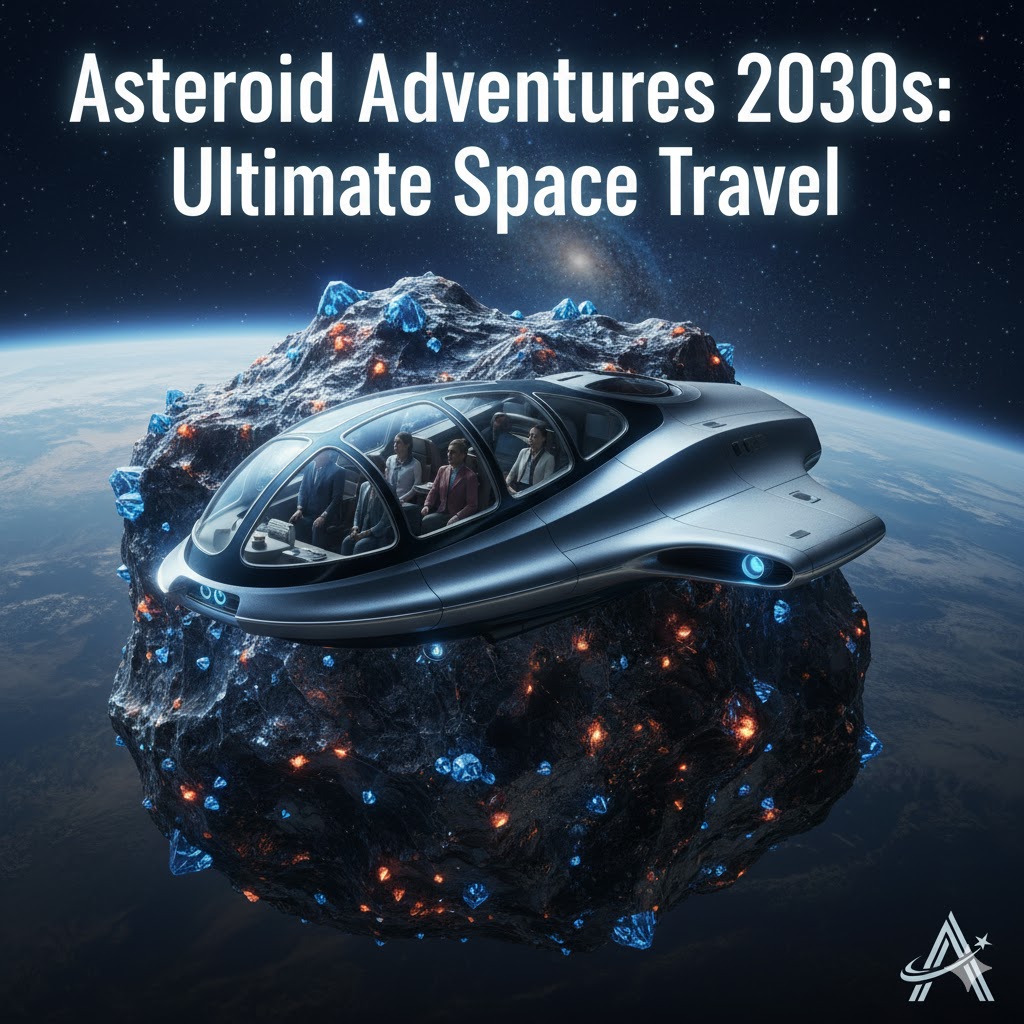Asteroid Adventures: The Wildest Trips of the 2030s
Introduction: From Dream to Destination
For decades, asteroids were objects of science — mysterious rocks drifting through space. But in the 2030s, asteroid tourism will transform them into luxury destinations. Picture yourself orbiting a diamond-rich asteroid, floating in zero gravity, and watching the sun rise twice over metallic horizons.
Powered by innovations from NASA, SpaceX, and private space travel firms, asteroid travel may soon blend scientific exploration with cosmic adventure — the next great leap beyond the Moon and Mars.
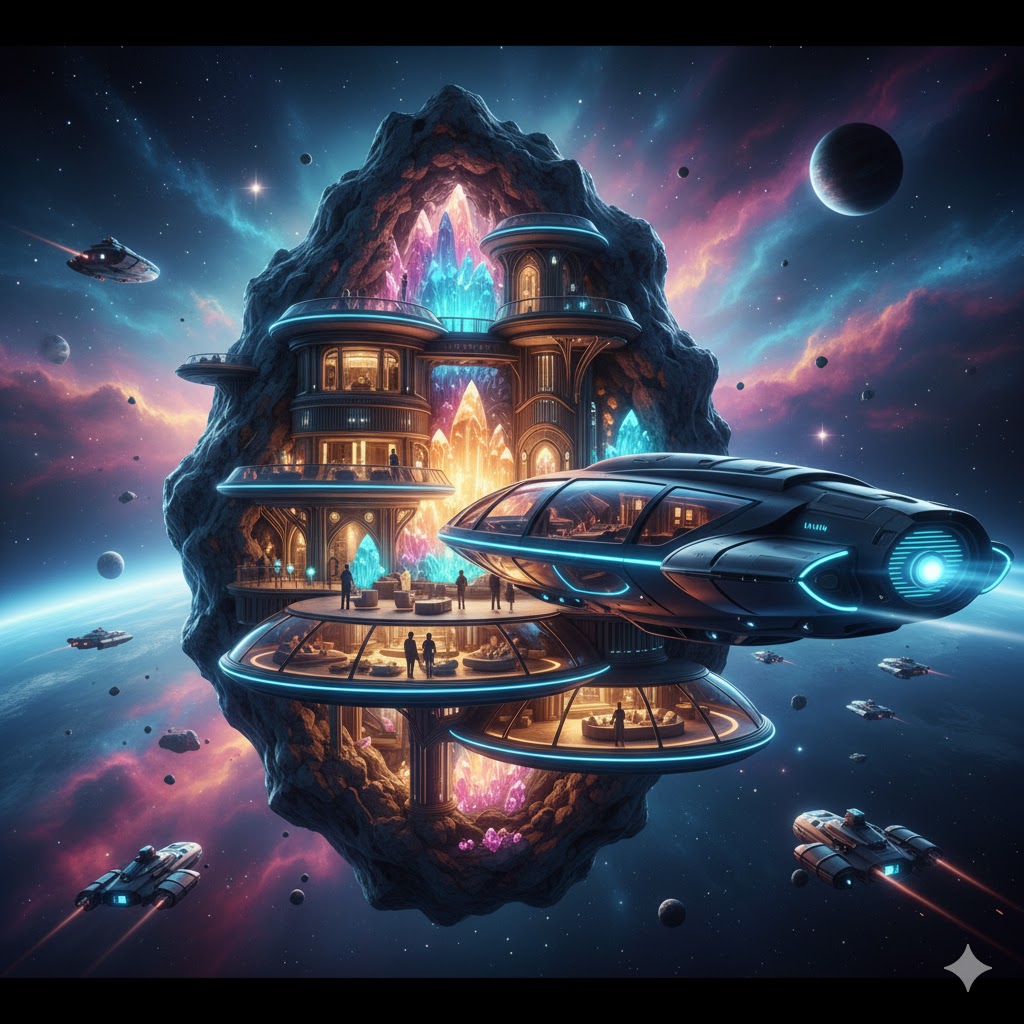
1. What Is Asteroid Tourism?
Asteroid tourism is the concept of visiting, orbiting, or even walking on small near-Earth asteroids for adventure, education, or luxury exploration.
Unlike moon or Mars travel, asteroids offer short-duration missions — typically a few weeks — making them ideal for early space tourism expansion.
The main attractions include:
- Zero-gravity hiking on metallic surfaces
- 360° space panoramas from private orbit capsules
- Interactive mining demonstrations showing resource extraction in real time
Sources: NASA’s Near-Earth Object Program monitors thousands of asteroids — several of which could become tourist-friendly by 2035.
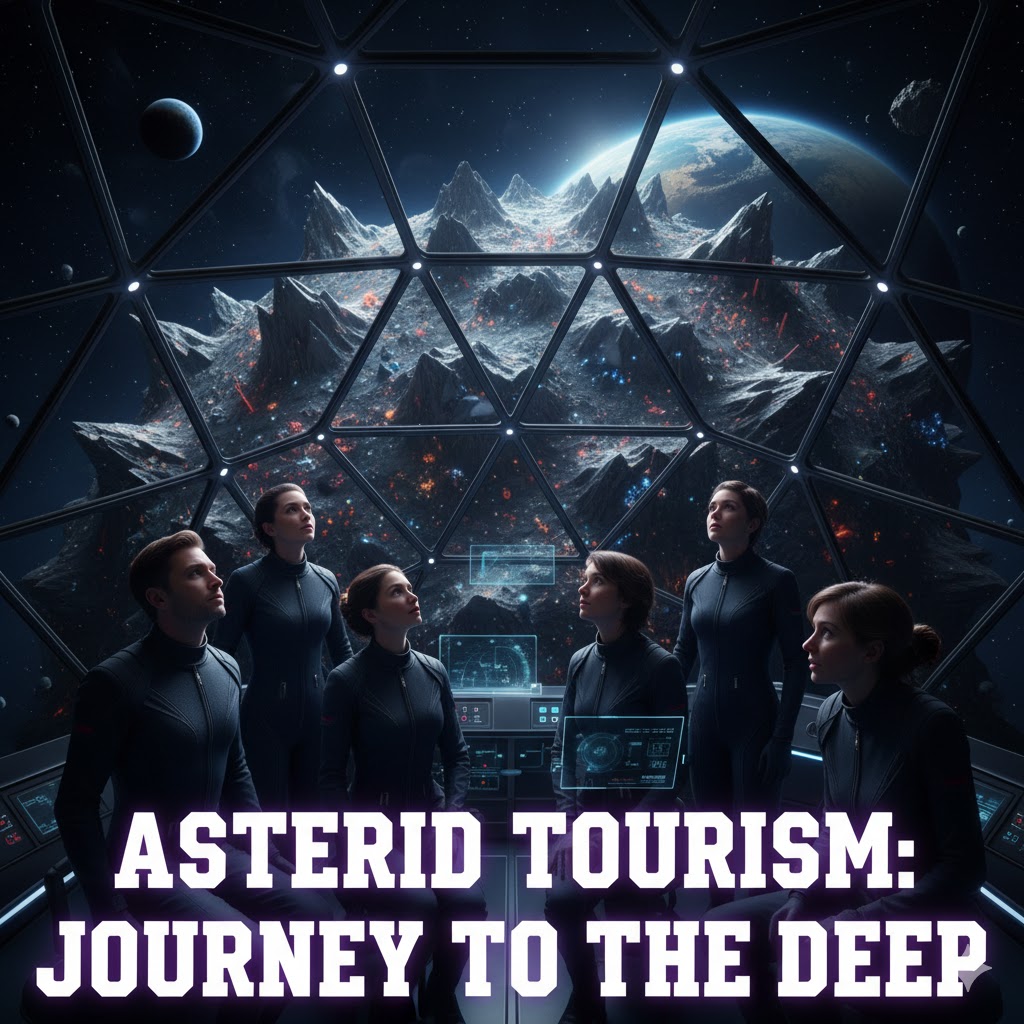
2. The Pioneers Behind the Vision
The journey toward asteroid tourism is led by a mix of government and private innovators:
- NASA’s OSIRIS-REx mission (2016–2023) proved humans can reach and study asteroids.
- SpaceX’s Starship could make orbital sightseeing missions around asteroids possible by 2030.
- Blue Origin’s Blue Moon program supports payload delivery to deep-space environments.
- Planetary Resources and Deep Space Industries once dreamed of mining asteroids — laying groundwork for commercial tourism.
Must Read: This mirrors earlier progress explored in Moon Village Tourism: Humanity’s First Tourist Town in Space.
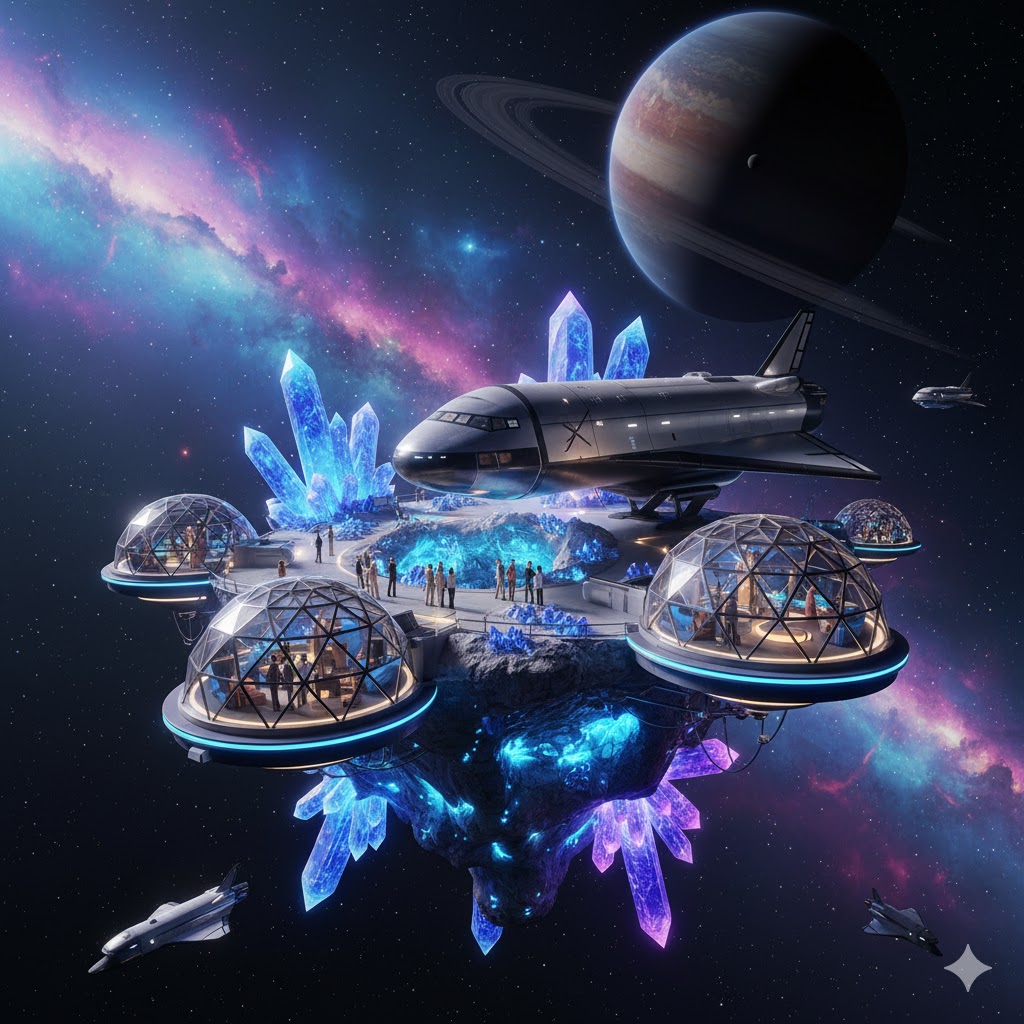
3. Inside the Asteroid Cruise Experience
Future asteroid tourism capsules may feel like a hybrid of luxury cruise and science lab. Passengers will board rotating space habitats offering simulated gravity, cosmic cuisine, and 360-degree observatories.
Key experiences could include:
- Gravity-glide excursions: Tethered walks over asteroid terrain
- Space spa treatments: Using microgravity to create a feeling of weightless relaxation
- Orbital stargazing nights: Watching galaxies drift by from a transparent sky dome
Source: Learn how Space Perspective’s Neptune Capsule redefined high-altitude luxury travel at spaceperspective.com.

4. Asteroid Mining Meets Adventure Travel
By the 2030s, asteroid mining could become a trillion-dollar industry. Tourists may join educational expeditions to witness how robotic miners extract water, metals, and rare elements.
Each mission could offer:
- Live demonstrations of AI-guided robotic mining
- VIP viewing galleries inside orbiting stations
- Commemorative asteroid samples or digital collectibles
Must Read: Similar to the tech-sustainability themes in Lunar Glamping: Camping Under the Moon’s Surface Domes, asteroid tourism merges innovation with eco-conscious design.
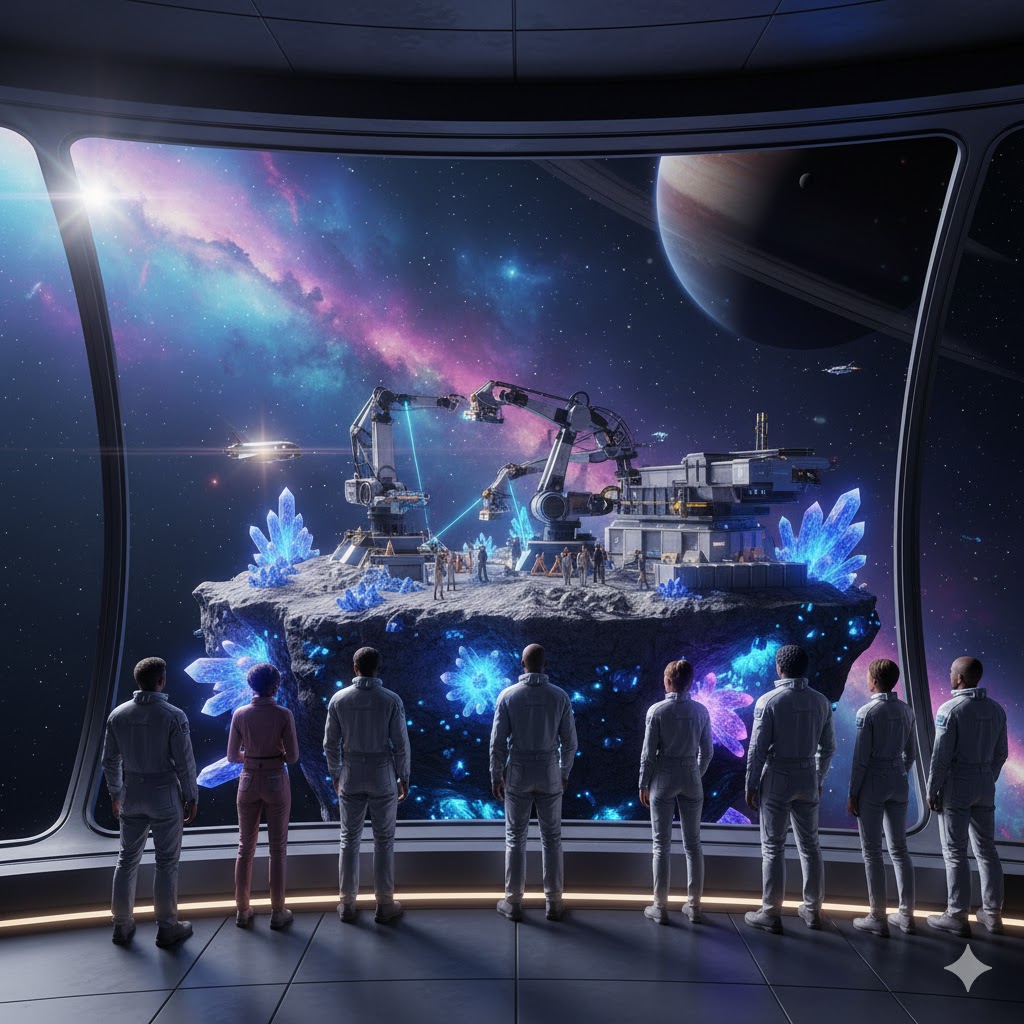
5. The Route: From Earth to the Asteroid Belt
Asteroid journeys will begin from orbital spaceports, likely in Earth’s low orbit or on lunar bases. Travelers will take multi-stage journeys:
- Earth to low orbit (SpaceX Starship)
- Docking at a refueling hub or lunar stopover
- Transfer to an asteroid-bound capsule
- Arrival and orbital sightseeing tour
Travel time may range from 2–6 weeks, depending on the asteroid’s proximity.
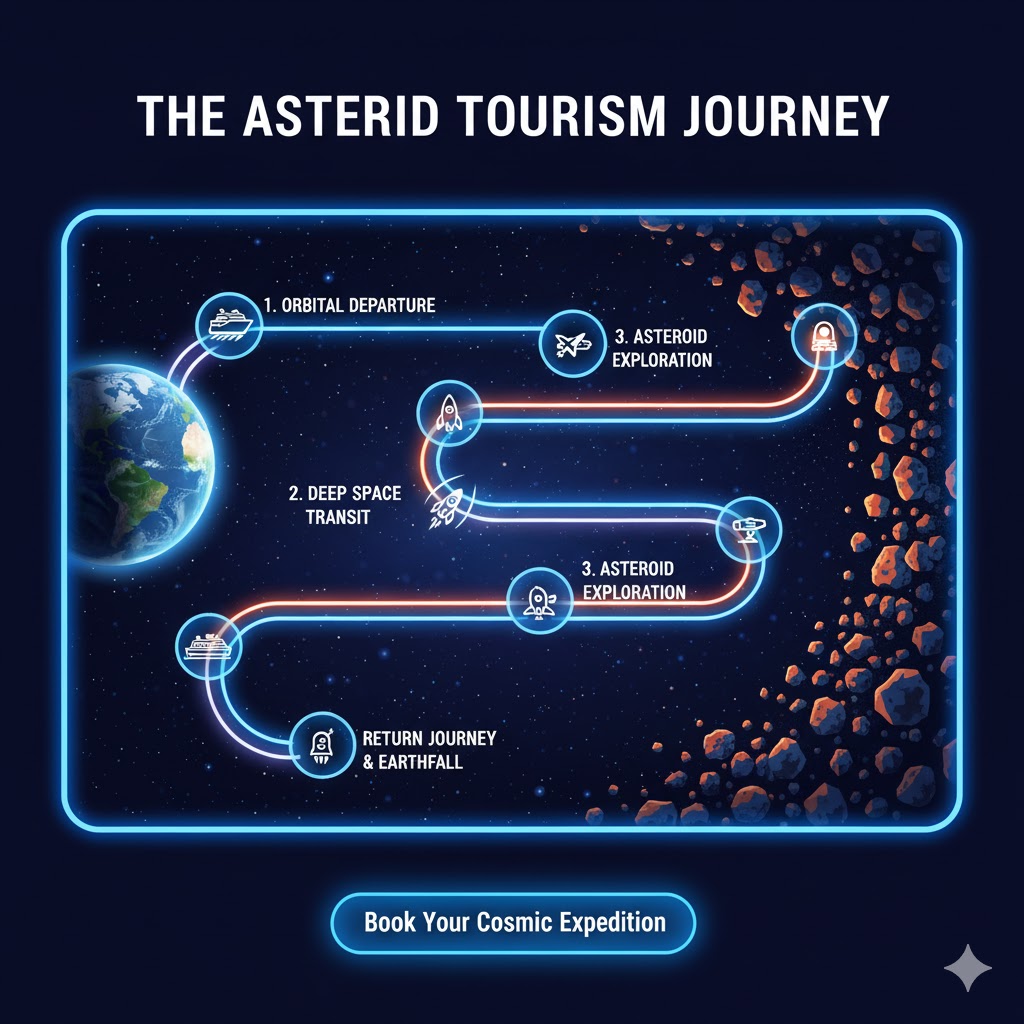
6. Science, Sustainability, and Safety
Safety and sustainability remain the core challenges.
NASA and ESA emphasize radiation protection, AI navigation, and renewable propulsion (like solar-electric engines) for deep-space tours.
By 2035, eco-friendly designs could make space tourism carbon-neutral, using space-based solar power and 3D-printed materials from asteroid resources themselves.
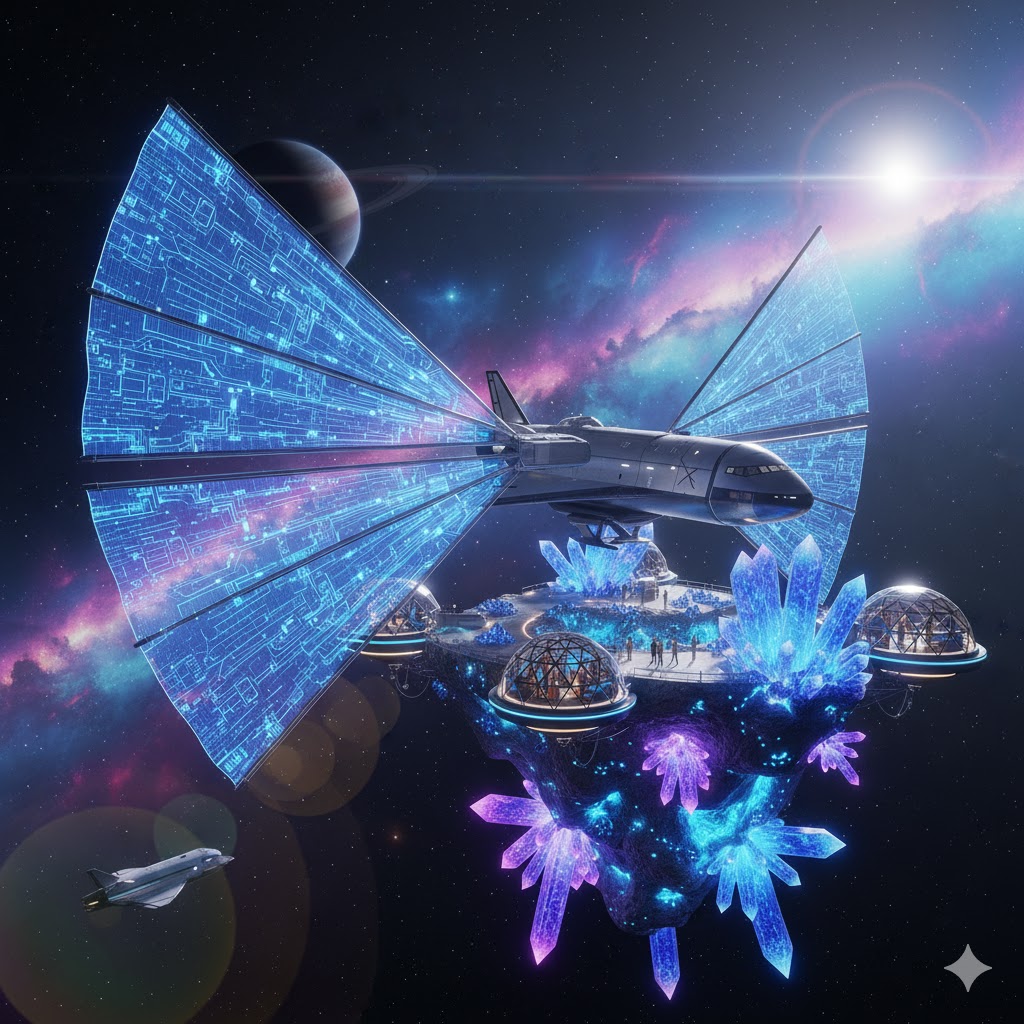
7. The Economic Boom of the 2030s
Analysts project asteroid tourism could become a multi-billion-dollar industry.
Expect investments from:
- Private luxury space agencies
- Tech entrepreneurs funding zero-gravity tourism
- Educational institutions offering “study trips” to space
Space hospitality, asteroid-based research, and virtual metaverse tourism will merge into one ecosystem — the Space Adventure Economy.
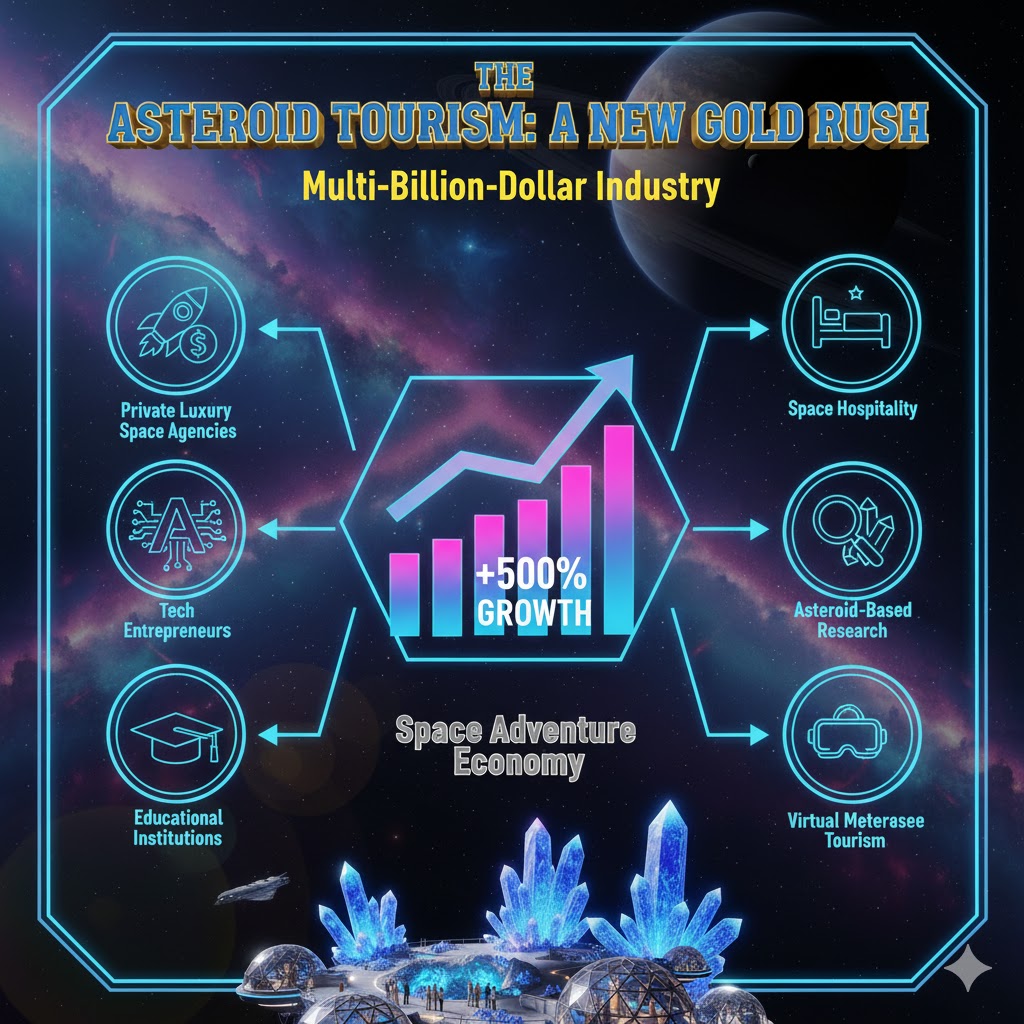
8. Ethics and Cosmic Responsibility
As exciting as it sounds, asteroid tourism raises ethical questions.
Should we treat asteroids as natural wonders to preserve, or resources to explore?
ESA proposes space preservation protocols, ensuring asteroid missions remain environmentally responsible — similar to Earth’s protected national parks.
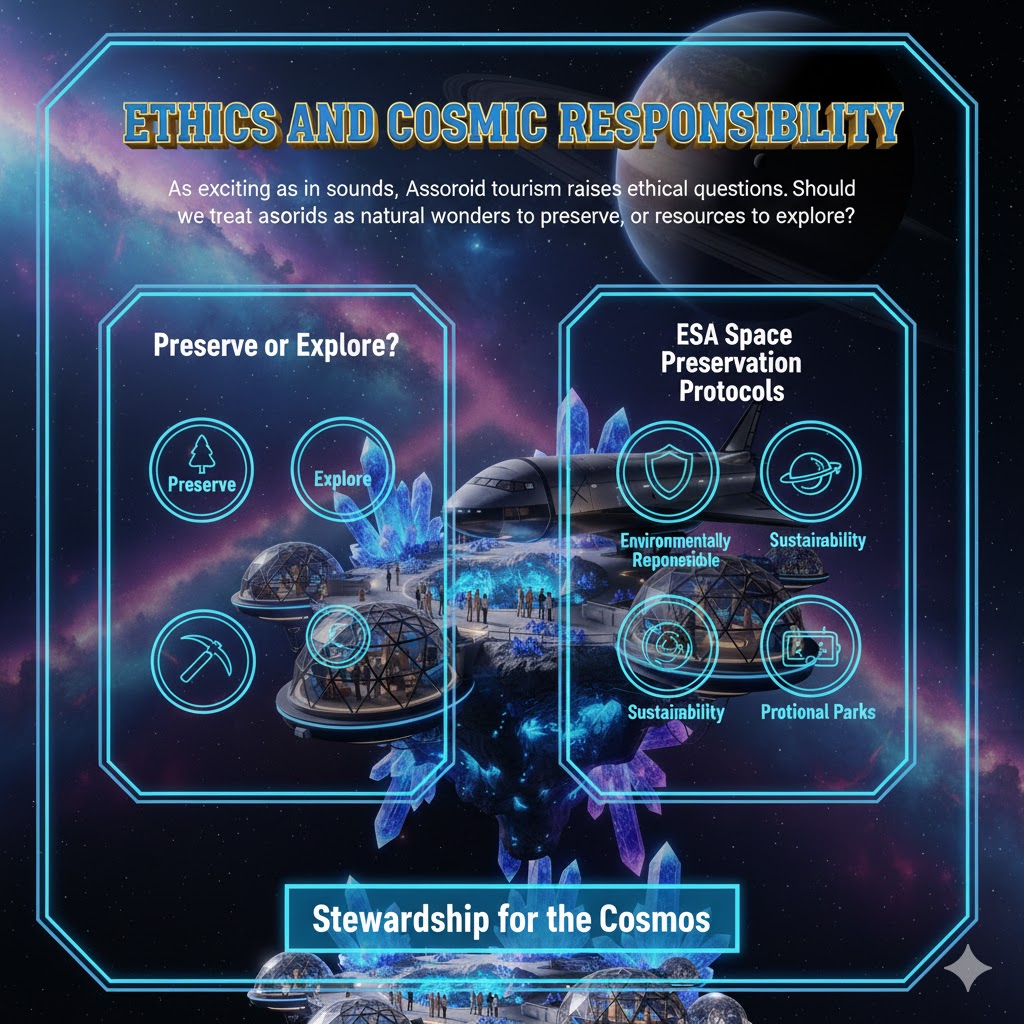
Traveler Review:
The 2030s may redefine adventure itself.
With asteroid tourism, humanity won’t just dream about space — we’ll live it.
As NASA, SpaceX, and private innovators build new pathways into orbit, every journey will become a mix of wonder, science, and human daring.
These are more than vacations; they’re cosmic milestones — the proof that our spirit of exploration still burns bright among the stars.
FAQs
Q1: What is asteroid tourism?
It’s the concept of visiting or orbiting asteroids for research and luxury adventure experiences.
Q2: Who will offer asteroid tourism first?
Likely private companies like SpaceX and Blue Origin, in collaboration with NASA’s exploration programs.
Q3: When could asteroid tourism start?
Feasibly by the early-to-mid 2030s, as technology and safety standards evolve.
Q4: Is asteroid tourism safe?
Safety will depend on advanced AI navigation, radiation shielding, and precise mission planning.
Q5: Will asteroid tourism be affordable?
Early trips may cost millions, but prices could fall as the space economy scales.

